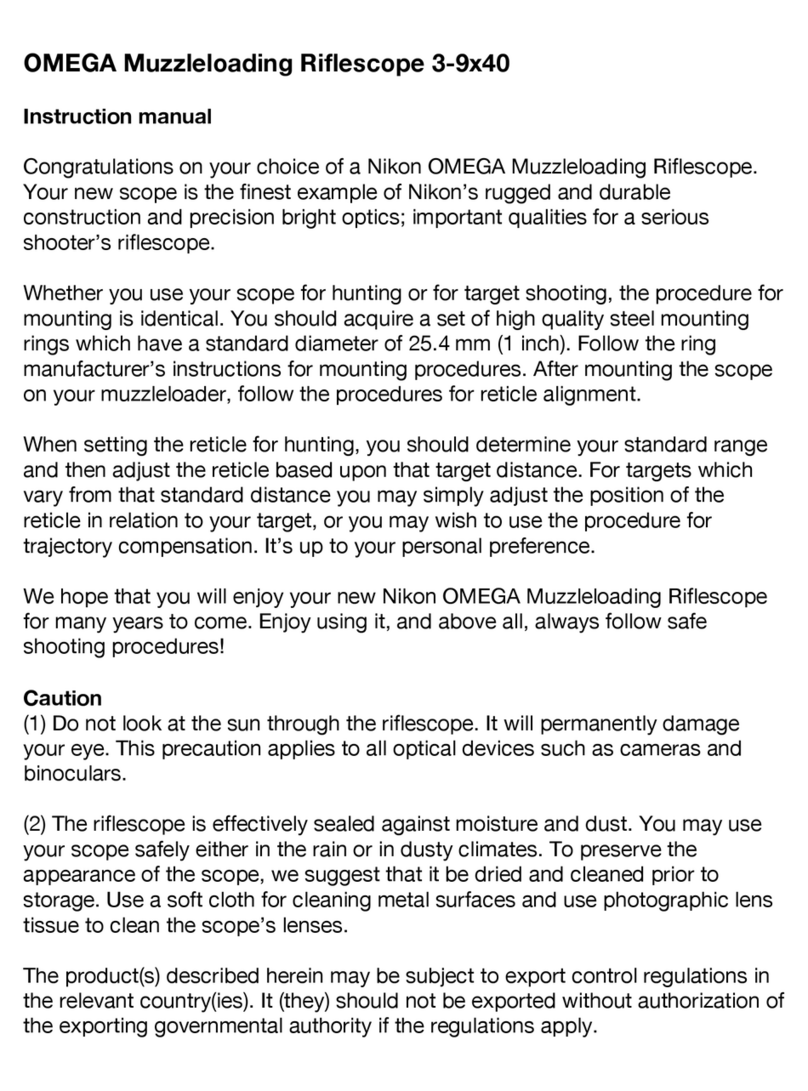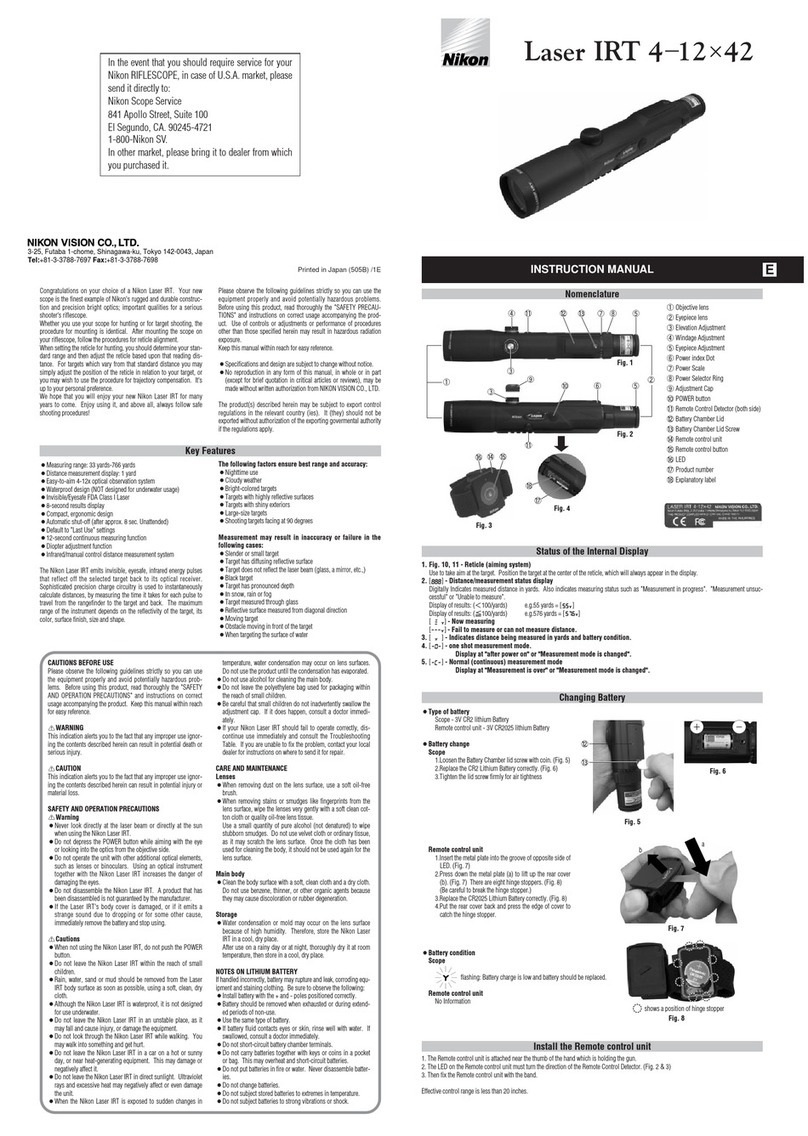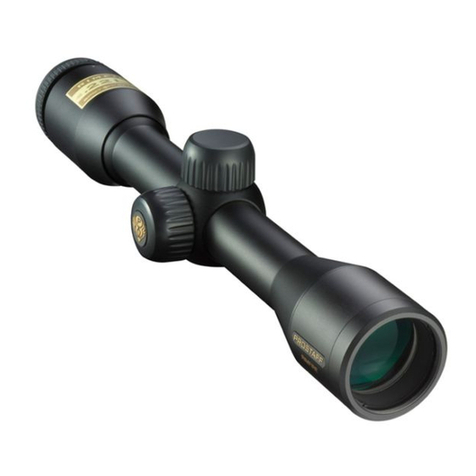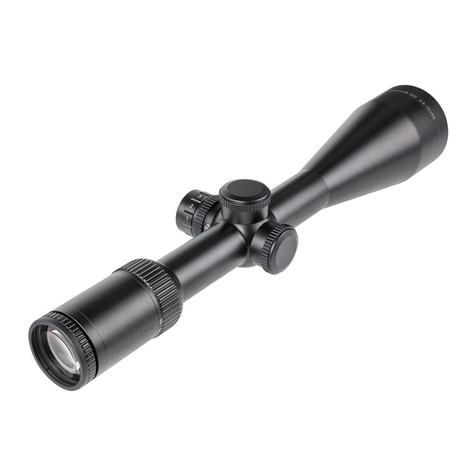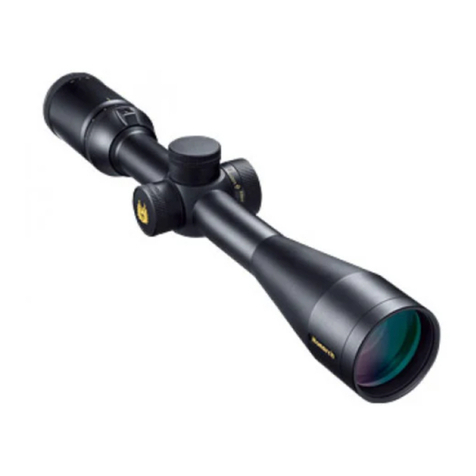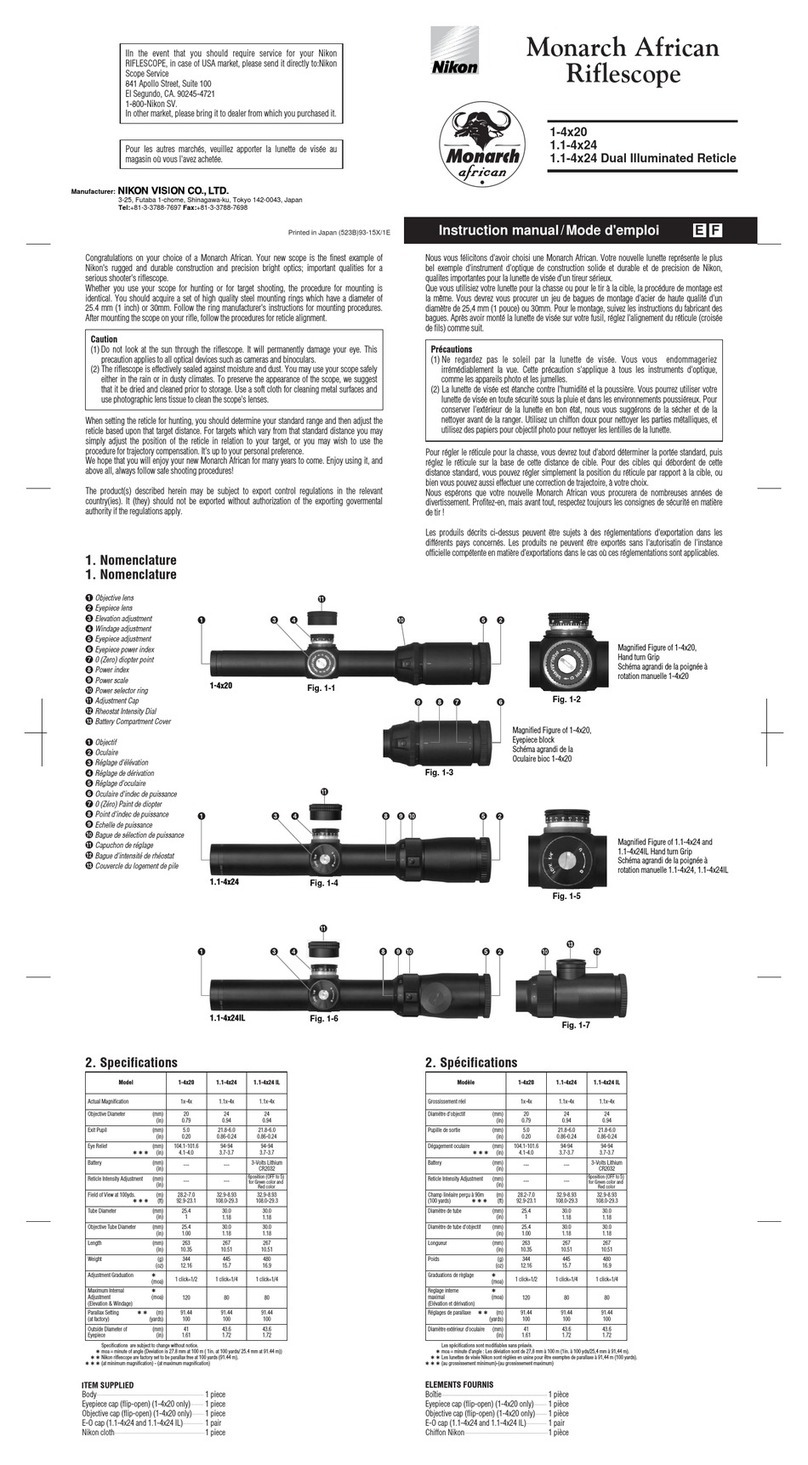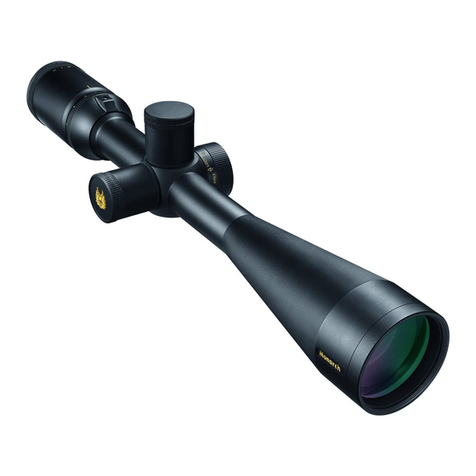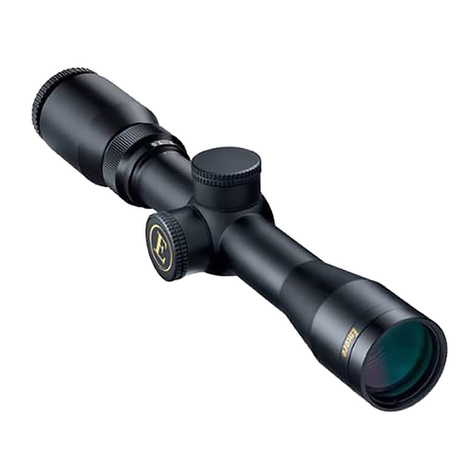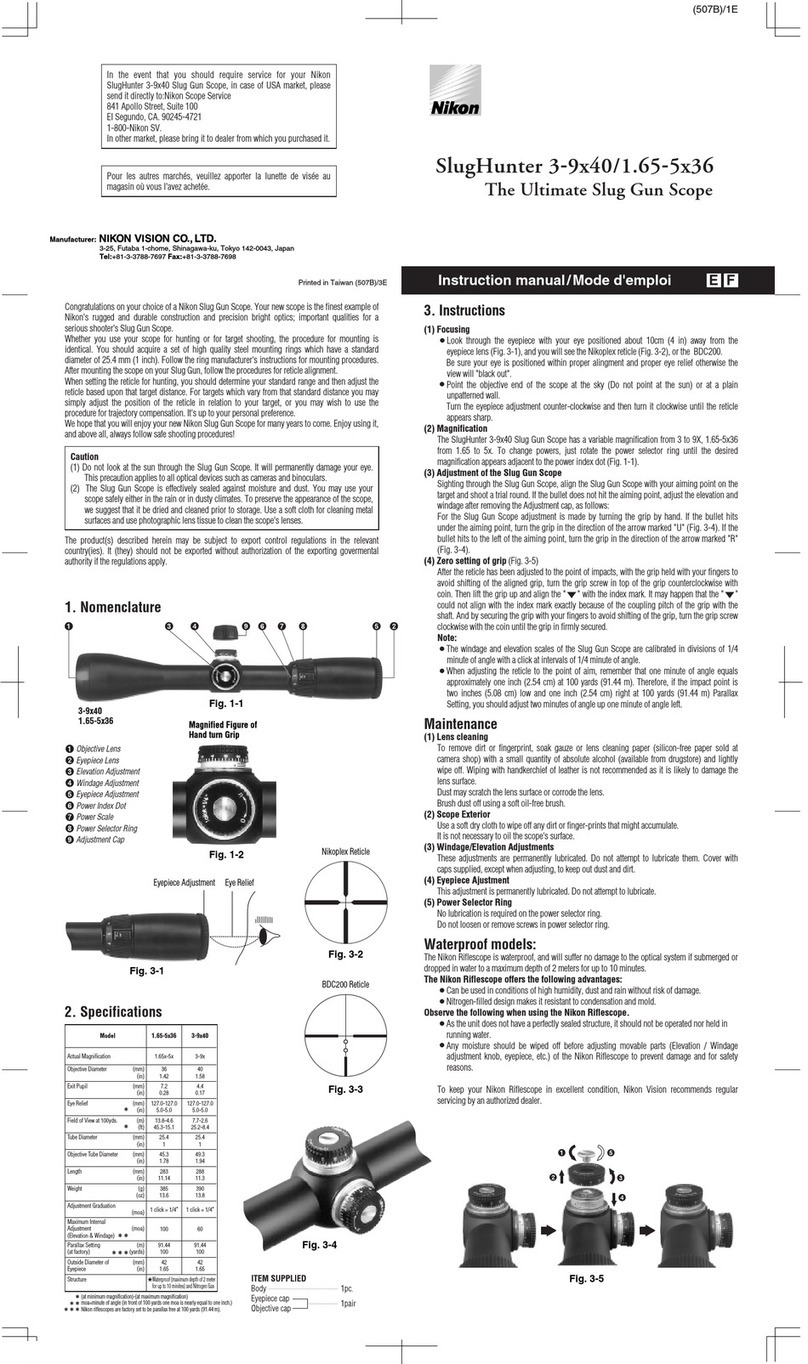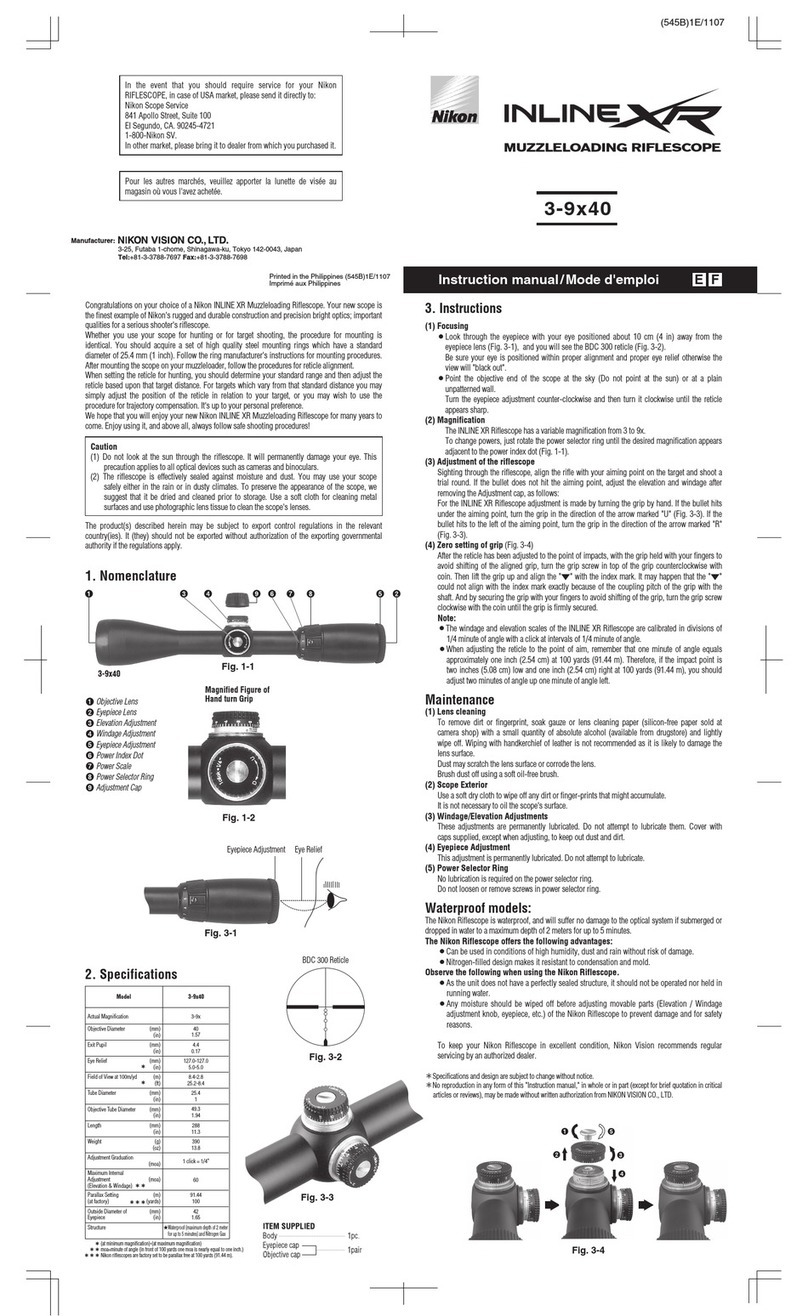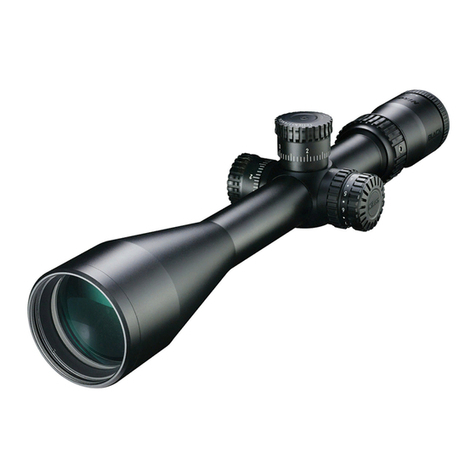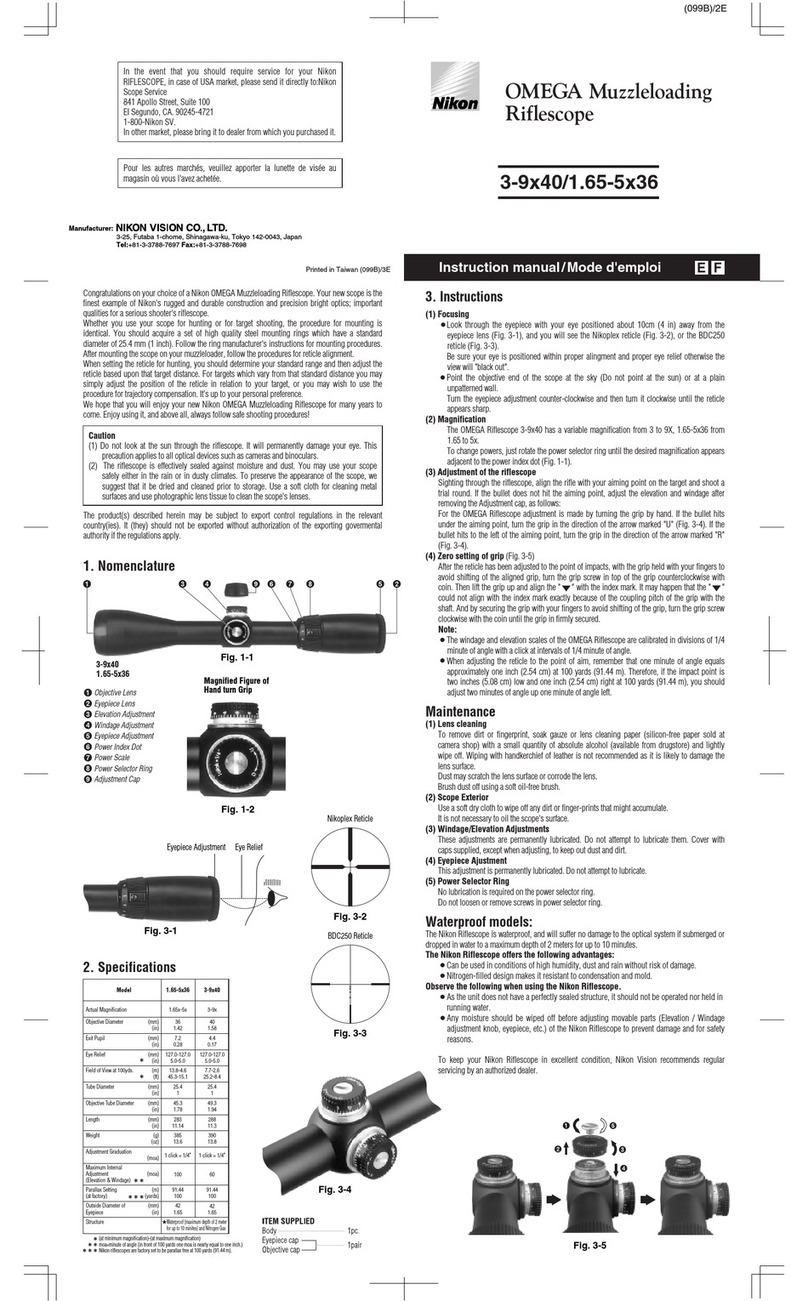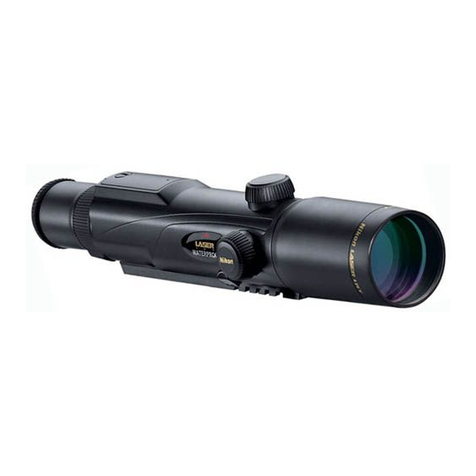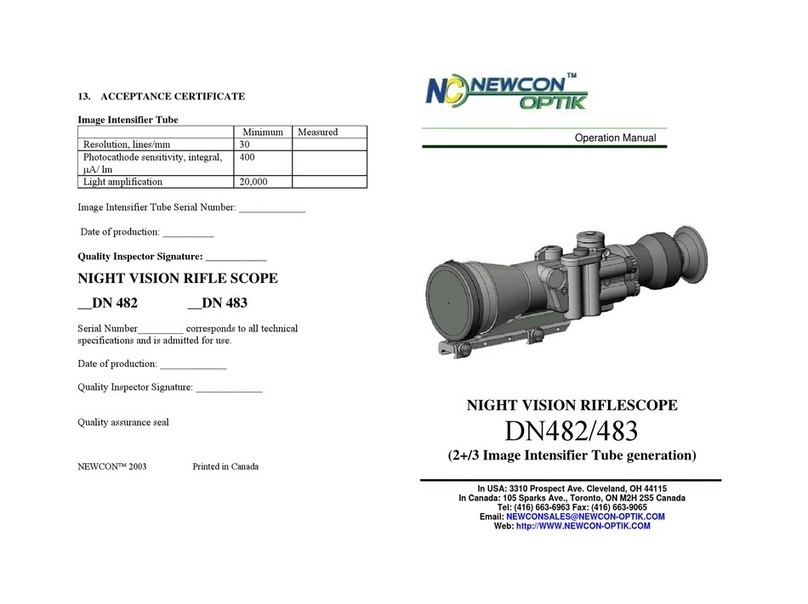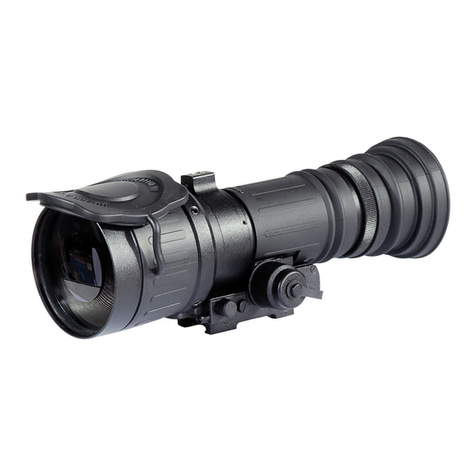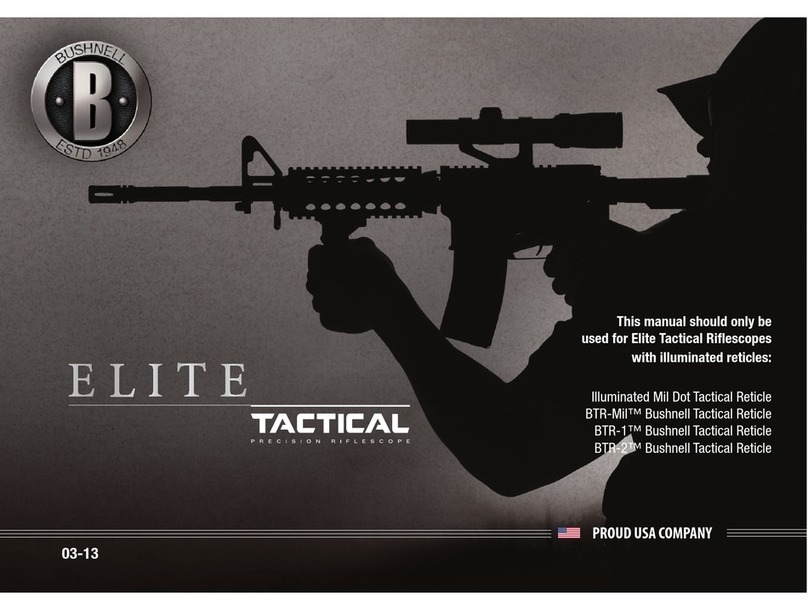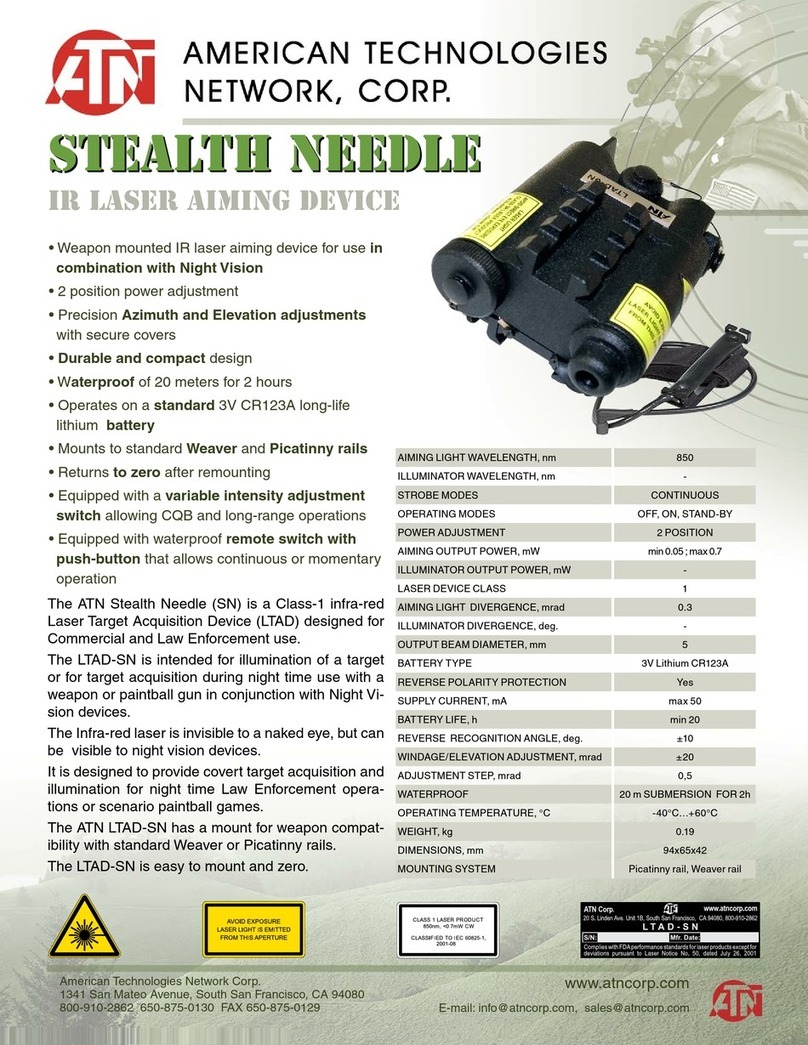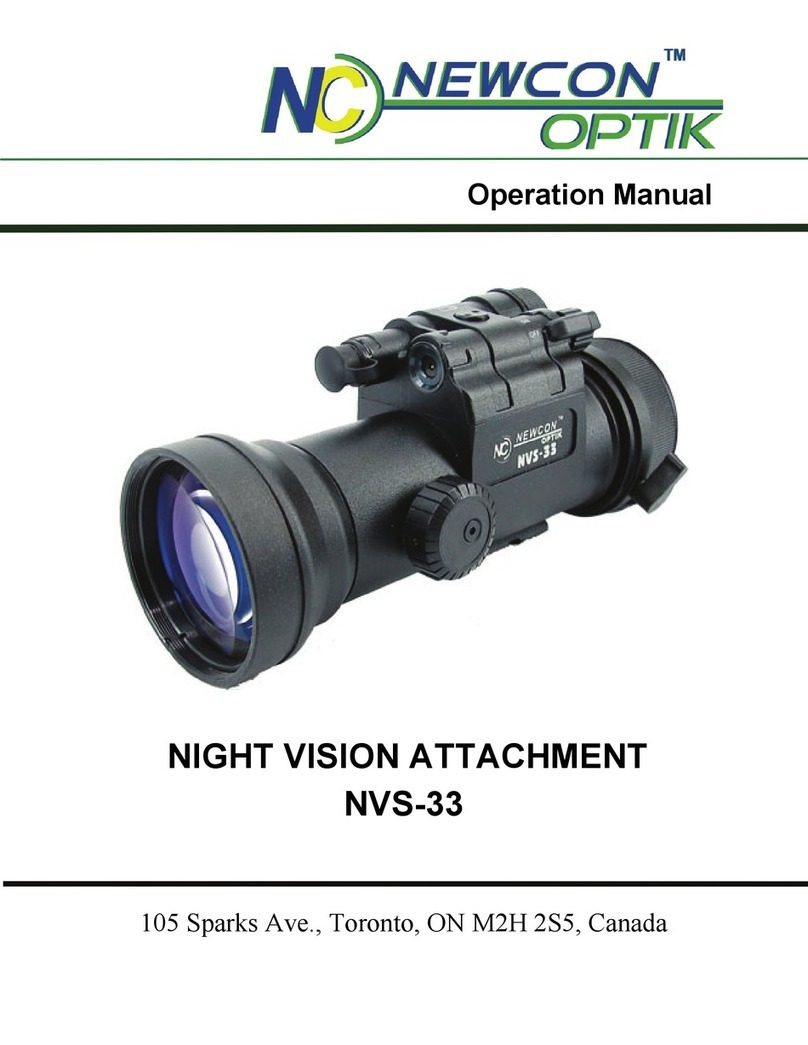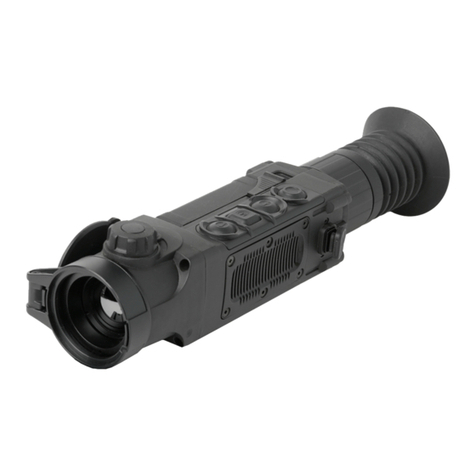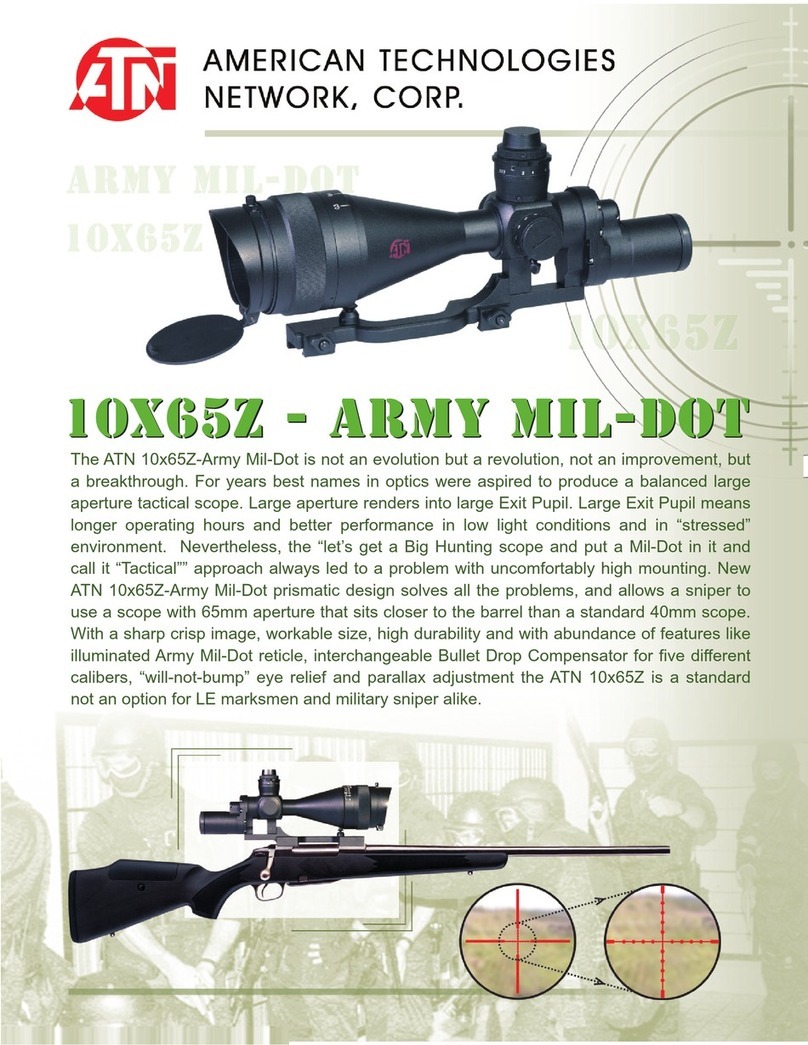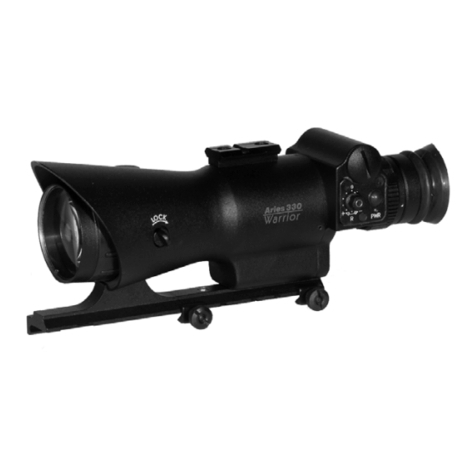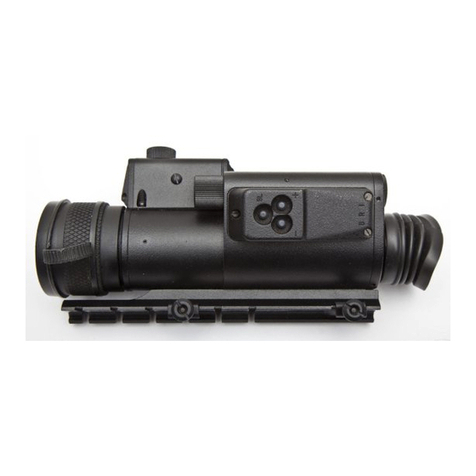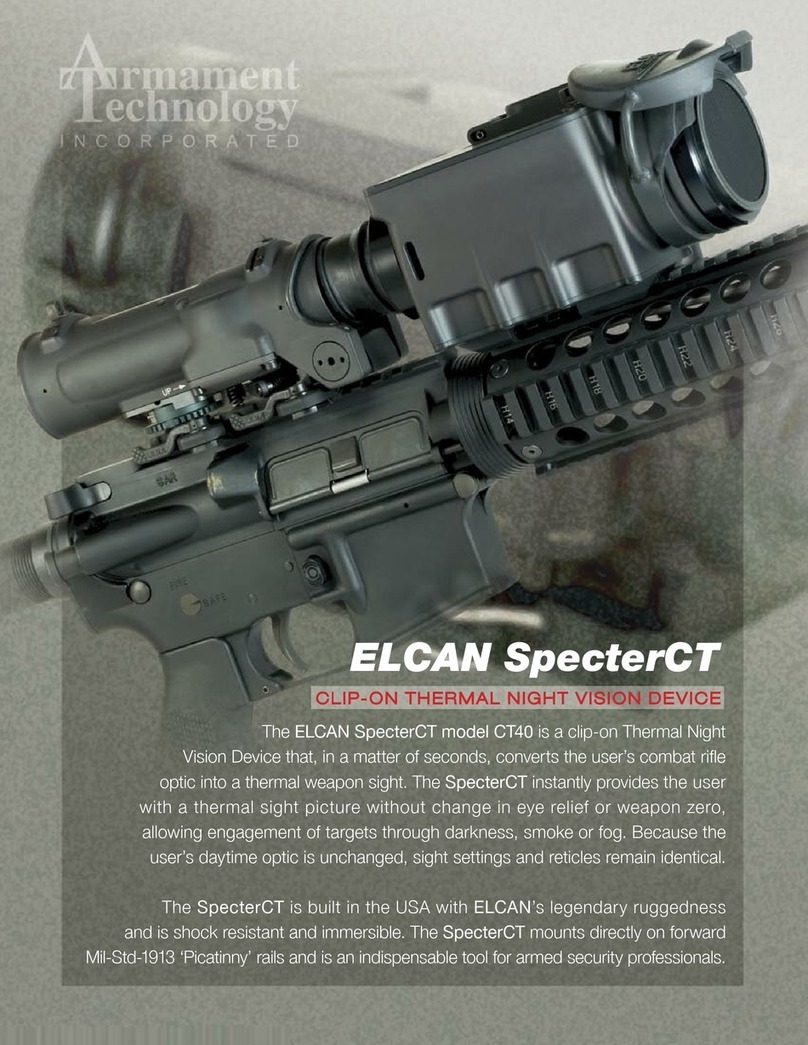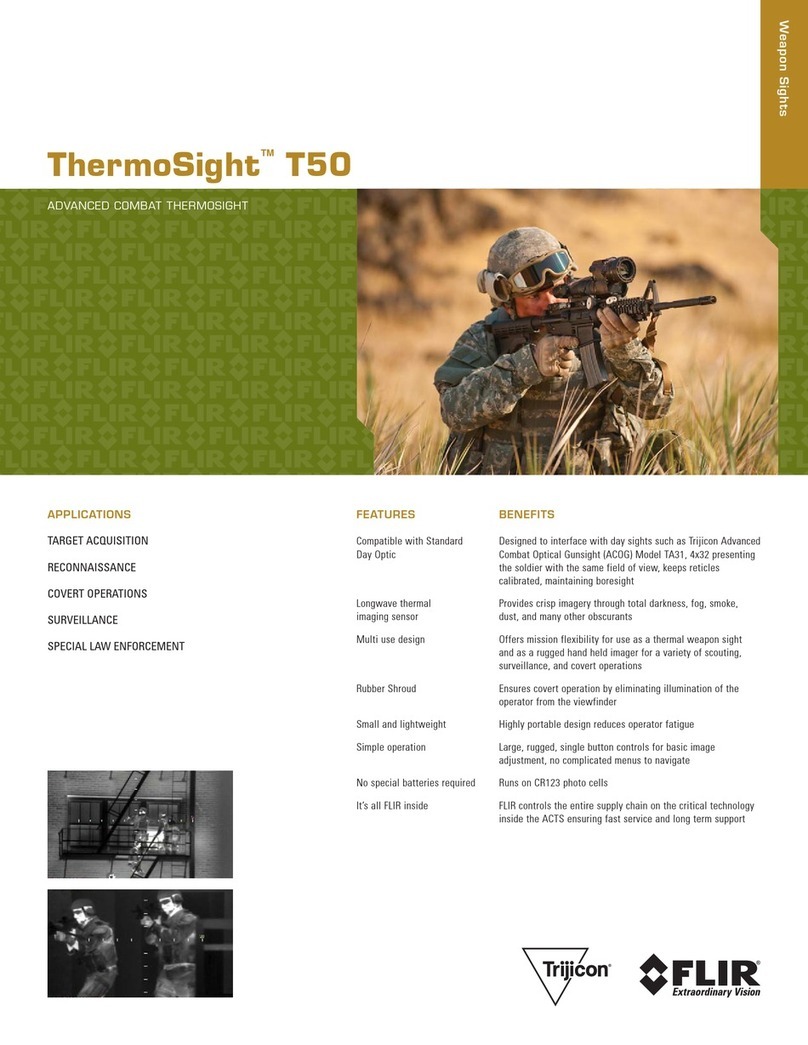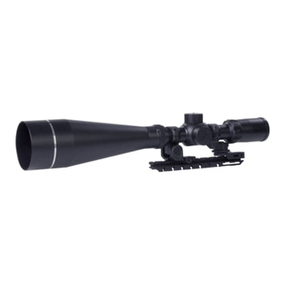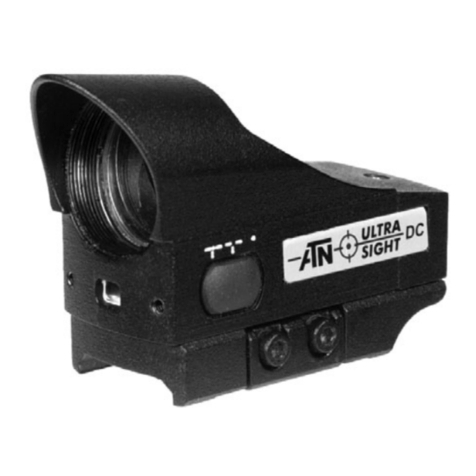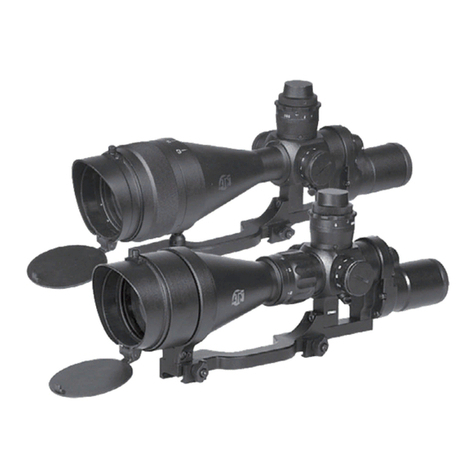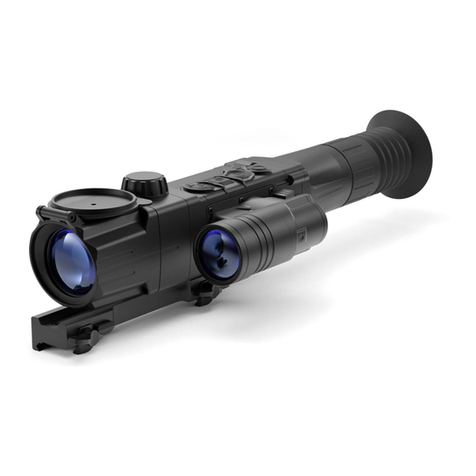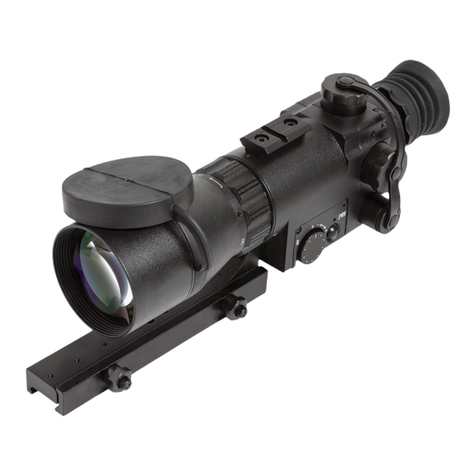
4
En
5
En
Congratulations on your choice of a Nikon PROSTAFF 5 Riflescope.Your new scope is the finest example of Nikon's rugged and durable construction and precision bright optics; important qualities for a serious shooter's
riflescope.
Whether you use your scope for hunting or for target shooting, the procedure for mounting is identical. A set of high-quality steel mounting rings which have a standard diameter of 25.4 mm (1 in) are required to mount
the scope. Follow the ring manufacturer's instructions for mounting procedures. After mounting the scope on your rifle, follow the procedures for reticle alignment.
SUPPLIED ITEM(S)
Body································ 1 piece High profile turret (4.5-18×40 SF, 4.5-18×40 SF IL only)··············2 pieces Hex key (4.5-18×40 SF, 4.5-18×40 SF IL only)································································1 piece
Eyepiece cap············ High profile turret cap (4.5-18×40 SF, 4.5-18×40 SF IL only)········2 pieces Battery Cover Opener (3.5-14×50 SF IL, 4.5-18×40 SF IL only)·····································1 piece
Objective cap··········· ······· 1 pair Sunshade (4.5-18×40 SF, 4.5-18×40 SF IL only)···························1 piece Battery (3V Lithium battery: CR2032) (3.5-14×50 SF IL, 4.5-18×40 SF IL only)···········1 piece
IMPORTANT INFORMATION
IT IS IMPORTANTTHATYOUR NIKON RIFLESCOPE IS MOUNTED PROPERLY ANDTHAT CAREFUL CONSIDERATION BE GIVENWHEN MOUNTINGYOUR NIKON RIFLESCOPE ON A FIREARM.
WE HIGHLY RECOMMENDTHATYOUR NIKON RIFLESCOPE BE MOUNTED ONYOUR FIREARM BY AN EXPERIENCED, REPUTABLE GUNSMITH.
THE USER ASSUMES ALL RESPONSIBILITY AND LIABILITY FOR HAVINGTHE NIKON RIFLESCOPE PROPERLY MOUNTEDTO A FIREARM AND USINGTHE NIKON RIFLESCOPE PROPERLY.
ALWAYS CHECKTHE CONDITION OFYOUR MOUNTING SYSTEM PRIORTO USINGYOUR FIREARM.
Caution
(1) Do NOT look at the sun through the riflescope. It will permanently damage your eye.This precaution applies to all optical devices, such as cameras and binoculars.
(2)The riflescope is effectively sealed against moisture and dust. You may use your scope safely either in the rain or in dusty climates. To preserve the appearance of the scope, we recommend that it be dried and
cleaned prior to storage. Use a soft cloth for cleaning metal surfaces and use photographic lens tissue to clean the scope's lenses.
(3)When not in use for an extended period, please remove the battery from the body.
(4) If the battery compartment cover is damaged, or if it emits a strange sound due to dropping or some other cause, remove the battery immediately and stop using.
Caution (Lithium battery)
If handled incorrectly, the battery may rupture and leak, corroding equipment and staining clothing. Be sure to observe the following:
•Install the battery with the + and - poles positioned correctly.
•The battery should be removed when exhausted or during extended periods of non-use.
•Do not short the end terminal of the battery chamber.
•Do not carry together with keys or coins in a pocket or bag, it may short and cause overheating.
•Do not expose the battery to water, or a flame. Never disassemble the battery.
•Do not charge the lithium battery.
•If liquid from a damaged battery comes into contact with clothing or skin, rinse immediately with plenty of water. If liquid from a damaged battery enters the eyes, rinse immediately with clean water, then consult a doctor.
•When disposing of the battery, follow your local area regulations.

